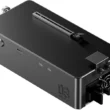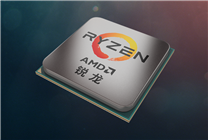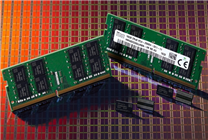Summary
- AMD positions itself as the only semiconductor company excelling in both CPU and GPU markets, but faces challenges in GPU competition.
- Despite commanding respect in the CPU sector with significant market share growth, its GPU presence remains limited to just 6%.
- AMD justifies its higher pricing through superior performance and reliability, targeting the server-level market while aiming for long-term advantages.
AMD: A Dual Titan in Silicon
On September 12, AMD declared its unique standing in the semiconductor industry, claiming to be the sole company adept at simultaneously mastering high-performance CPUs and GPUs. However, the company’s performance in the GPU sector raises some concerns.
GPU Market Landscape
AMD’s struggle in the GPU arena is evident, where NVIDIA has largely monopolized the market. Recent reports indicate that AMD’s share of the independent graphics market was merely 6% in the second quarter, a figure that underscores the challenges AMD faces in attracting GPU customers.
Excellence in CPU Performance
Contrastingly, AMD has made remarkable strides in the CPU domain. Over the past seven years, the EPYC processor line has surged from a standing start to grab a noteworthy 47% market share. Similarly, the Ryzen line, particularly the third-generation X3D products, has gained substantial popularity among gamers, reinforcing AMD’s reputation as a formidable player in the CPU market.
Forrest Norrod, Executive Vice President of Data Center Solutions, recently highlighted these achievements during a talk at Goldman Sachs, where he addressed the pricing strategies behind AMD’s products. He disclosed that AMD’s average selling price (ASP) for CPUs is somewhat higher than its competitors, prompting questions about their pricing strategy in a competitive marketplace.
Justifying the Price Tag
Norrod explained that the higher cost of AMD products is justified by the enhanced value they provide. Key factors contributing to this value include superior performance, reliability, and advancements in technology. This premium pricing reflects AMD’s commitment to delivering products that not only meet but exceed customer expectations, enabling them to justify the investment.
Furthermore, Norrod’s commentary primarily emphasized server-level CPUs while hinting at AMD’s aggressive aspirations in the GPU space. He indicated that AMD is evaluating its Instinct and GPU product lines through a similar lens, aiming to deliver advanced total cost of ownership (TCO) advantages. This approach emphasizes AMD’s strategic focus on cluster-level performance benefits, appealing to enterprises seeking efficiency and effectiveness.
Future Outlook
AMD’s trajectory suggests a robust future, particularly as it explores synergies between its CPU and GPU divisions. Even though the company is encountering substantial hurdles in the GPU sector, its achievements in CPUs lay a strong foundation for future growth.
In an increasingly competitive landscape dominated by NVIDIA, AMD’s strategy of positioning itself as a provider of high-value products could differentiate it in the market. The company’s emphasis on performance and reliability may resonate particularly well with enterprise customers, who are often more willing to invest in quality technology solutions.
Conclusion
As AMD continues to navigate the complex semiconductor landscape, its dual focus on both CPU and GPU technology will be crucial. While facing formidable competition, the company’s innovative spirit and commitment to providing superior products hold the potential for a compelling future. The semiconductor industry is evolving rapidly; AMD’s ability to adapt and thrive in both arenas will determine its position in a highly competitive market.








